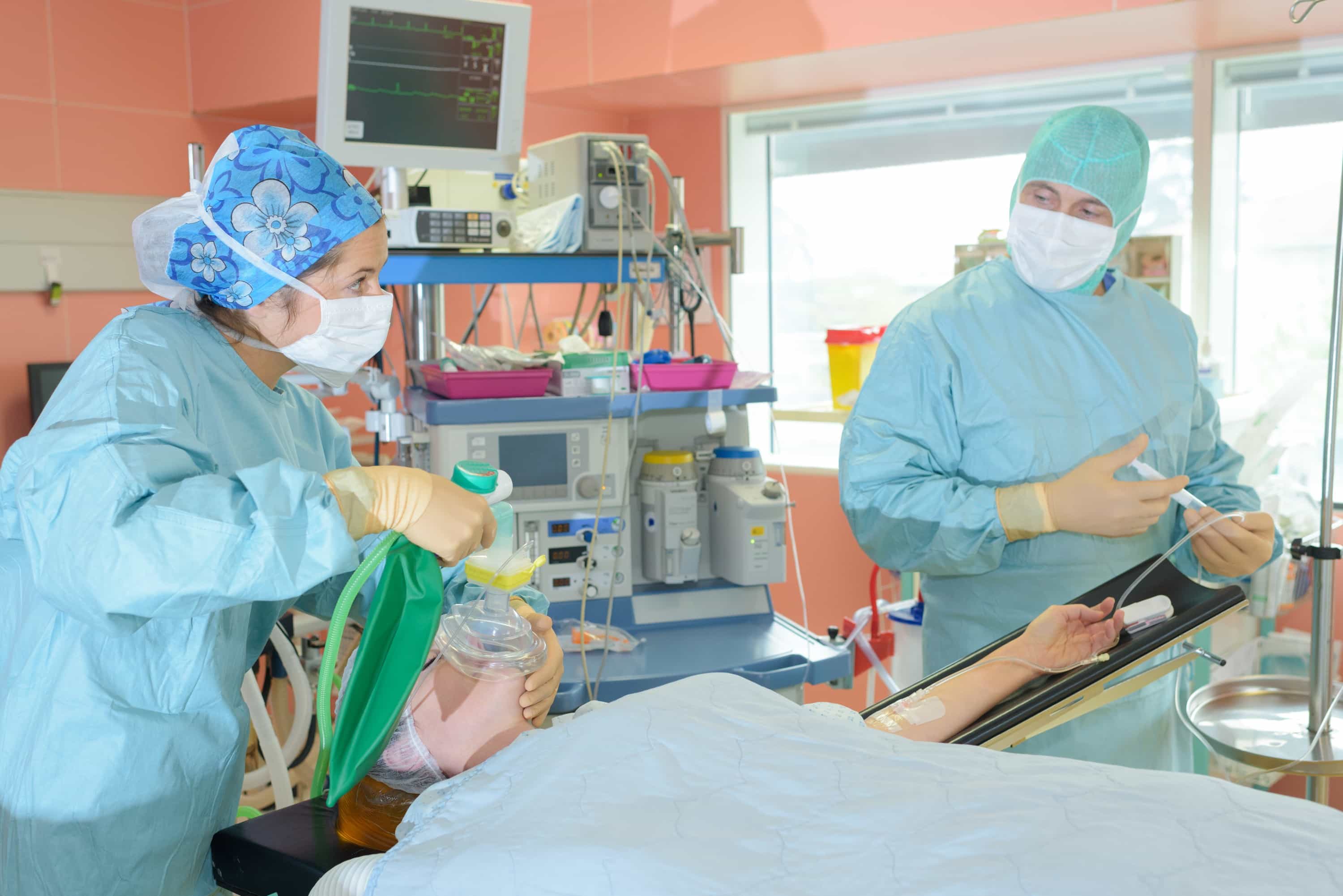
Mitral regurgitation is a common valvular pathology that can lead to heart failure, so surgical correction is advised. However, some patients are unable to receive mitral valve surgical repair due to the increased perioperative risk. Percutaneous edge to edge mitral valve repair (PMVR) using the MitraClip system has been demonstrated to be a safe and effective alternative to treat severe mitral regurgitation in these patients. Unlike other percutaneous interventions, such as transcatheter aortic valve replacement (TAVR) that is getting more commonly performed under conscious or deep sedation, most PMVR procedures are currently being performed under general anesthesia. While general anesthesia provides advantages such as guaranteed immobility, ability to give breath holds for challenging anatomic conditions, and control of the airway, disadvantages include greater hemodynamic swings, greater incidence of perioperative hypotension, and increased duration of anesthesia. These disadvantages have been shown to be risk factors for prolonged hospital stay and increased morbidity.
Two European prospective studies were published last year comparing general anesthesia to deep sedation for PMVR. Each consisted of over 200 patients. Patients were not randomized in either study, but in the Patzelt study they were individually evaluated by the cardiology and anesthesia teams regarding suitability for deep sedation (patients selected for general anesthesia may have a more challenging anatomy, for example, which may have benefited from controlled ventilation). The Horn study used its scheduling system to assign patients to either group regardless of patient characteristics, though more patients ended up being in the deep sedation group. Both studies used midazolam and propofol as primary sedatives for the deep sedation group.
Despite significant differences between patient groups in the Patzelt study (general anesthesia patients were younger but tended to have more severe disease and comorbidities, though pulmonary hypertension was more prevalent in the deep sedation group), both studies nevertheless found similar outcomes. There was no difference found between the two groups in terms of procedure success, surgical complications, major cardiac and cerebrovascular events, or postoperative pneumonia. Both studies found advantages to deep sedation, including shorter preparation time in the cath lab and ICU stay duration. The Horn study found longer procedure time and fluoroscopy time for the general anesthesia group, however this may be confounded by baseline patient characteristic differences between the two groups.
These two single institution prospective studies provide encouraging data for the safety of deep sedation for percutaneous mitral valve repair procedures. For eligible patients, it may be worth discussing whether this anesthetic approach may be appropriate.
References:
Horn P, Hellhammer K, Minier M, Stenzel MA, Veulemans V, Rassaf T, Luedike P, Pohl J, Balzer J, Zeus T, Kelm M, Westenfeld R. Deep sedation Vs. general anesthesia in 232 patients undergoing percutaneous mitral valve repair using the MitraClip® system. Catheter Cardiovasc Interv. 2017 Dec 1;90(7):1212-1219.
Patzelt JI, Ulrich M, Magunia H, Sauter R, Droppa M, Jorbenadze R, Becker AS, Walker T, von Bardeleben RS, Grasshoff C, Rosenberger P, Gawaz M, Seizer P, Langer HF. Comparison of Deep Sedation With General Anesthesia in Patients Undergoing Percutaneous Mitral Valve Repair. J Am Heart Assoc. 2017 Dec 2;6(12)

